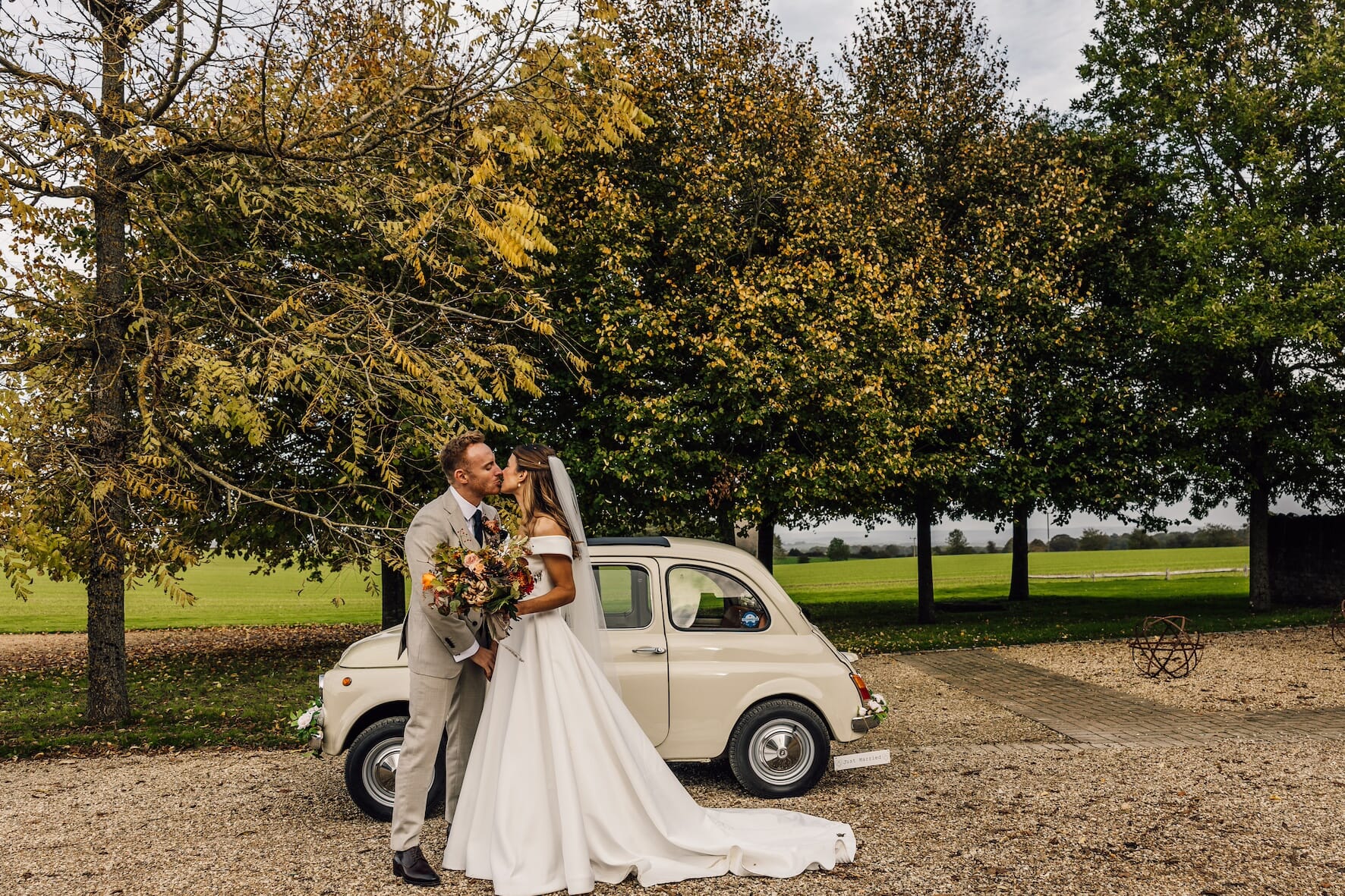How long is a wedding ceremony?
The question about how long a wedding ceremony takes will depend on what style of wedding you choose. A registry office wedding ceremony can be as quick as 10-15 minutes; a service at a wedding venue such as Lapstone Barn would usually be around 30 minutes; while a church ceremony could last around an hour.
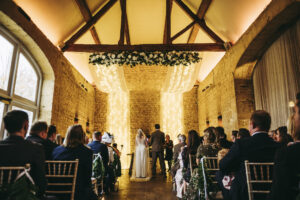
What happens at a UK wedding ceremony?
Whether you’re having a humanist, a church or a celebrant-led wedding ceremony, most wedding ceremonies follow a similar format. Here are the elements that couples should think about when planning their wedding ceremony:
1. Ceremony venue
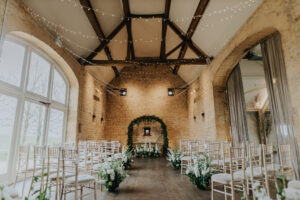
Holding your wedding ceremony at your chosen wedding venue is a convenient and often cost-effective solution. At Lapstone Barn, 93% of couples choose to get married in our Grade II listed Cotswold stone barn, which is licensed for civil ceremonies, partnerships and blessings. We can accommodate up to 200 guests at Lapstone Barn, but at some wedding ceremony venues you may be limited on the number of guests you can invite, so do your research. We are also happy for couples to choose their own music and decorations, but again, this might not be possible at some wedding ceremony venues.
2. Arrival and procession
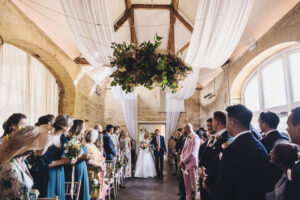
The arrival of the bride or groom is perhaps the biggest moment of any wedding ceremony. Traditionally, the bride is accompanied by her father or a close family member as she walks down the aisle to music of your choice. However, modern weddings may see different arrangements and at same-sex weddings, both parties may choose to walk down the aisle. There isn’t really a set way to do the processional – it’s about choosing a format that reflects you as a couple.
3. Welcome address
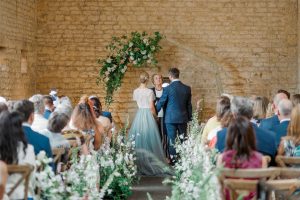
During the welcome, the vicar or celebrant will welcome the couple and the congregation. This will be a personalised address to you, the couple, which you can plan with the officiant prior to the wedding day.
4. Song or reading
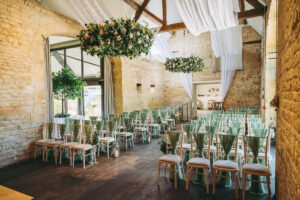
Depending on your chosen wedding ceremony venue, there will usually be a hymn, song, reading or poem at this early stage in the proceedings. Wedding venues which are licensed for civil ceremonies are secular, which means it is completely non-religious, so bear this in mind when choosing your songs, poems and readings.
5. The wedding vows
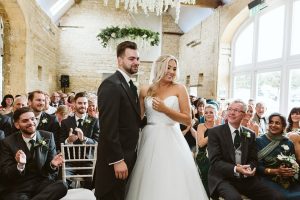
This is when the official marriage ceremony starts to take place. The officiant will remind you of the responsibilities and meaning of the vows you are about to take. This is also the part where the congregation is asked if there’s any reason in law why the couple should not marry. You will then exchange your vows. To make your marriage legal, there are certain declarations and contracting words you must say. However, the rest of the wording of your vows are up to you.
6. Exchange of rings
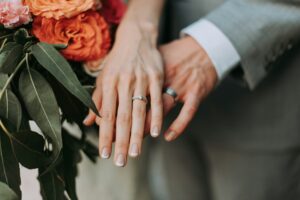
It is not actually a legal requirement to exchange wedding rings in the UK, but many couples choose to do it as it forms a big part of the wedding ceremony. The Best Man will usually hand the rings to the officiant or vicar who will bless them before inviting you to place a ring on the third finger of each other’s left hand while speaking a dedication.
7. Declaration of marriage and kiss
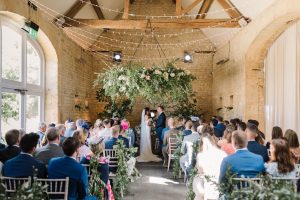
This is the part everyone has been waiting for – you’re married! Queue whooping, cheering, whistling and clapping- and a sense of relief that the hard bit is over!
8. Optional address, readings or prayers
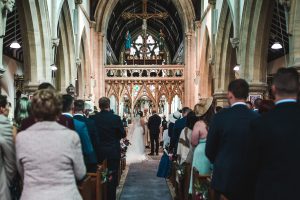
In a religious wedding ceremony, this is the point where the vicar will usually do a sermon, followed by more readings, a hymn and prayers. In a secular wedding ceremony, it’s a good place for some music – perhaps a live flautist or string quartet, and a heartfelt reading or poem by a friend or family member.
9. Signing of the register
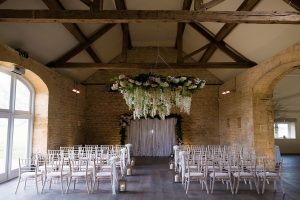
This is the final stage in making your wedding legal. Two witnesses – whom you will choose prior to the service – will watch you sign the marriage register. During the signing, it is usual to have music playing for the rest of the congregation to enjoy. You will be given a copy of your marriage certificate so give it to someone who will look after it!
10. Recessional and exit
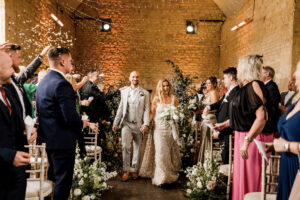
The pressure is off, and now it’s time to start thinking about the reception – the sense of relief is usually palpable! During the exit, you can choose to have your own music playing, usually something that’s meaningful to you. The couple will walk down the aisle to well-wishes from the crowd, and the congregation will begin to peel away from the front rows behind the couple. Confetti is usually thrown outside the venue but do check the venue’s regulations. At Lapstone Barn, we allow real petal confetti to be thrown outside the wedding venue.
Make time to plan your wedding ceremony
At the end of the day, there are certain legal requirements that have to be adhered to in a wedding ceremony but there is still a lot of freedom to make the wedding day your own. To help make the wedding ceremony run smoothly, plan all the details beforehand – take a look at our blog to work out how long in advance you should plan your wedding.
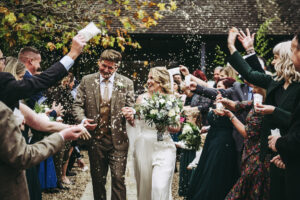
Let us help you plan your wedding ceremony!
Our experienced wedding coordinators know exactly what needs to be involved in planning your wedding ceremony. Get in touch with our team and we can show you around our beautiful wedding venue.
